
Range Rover Estate (2013-2021) interior, tech and comfort
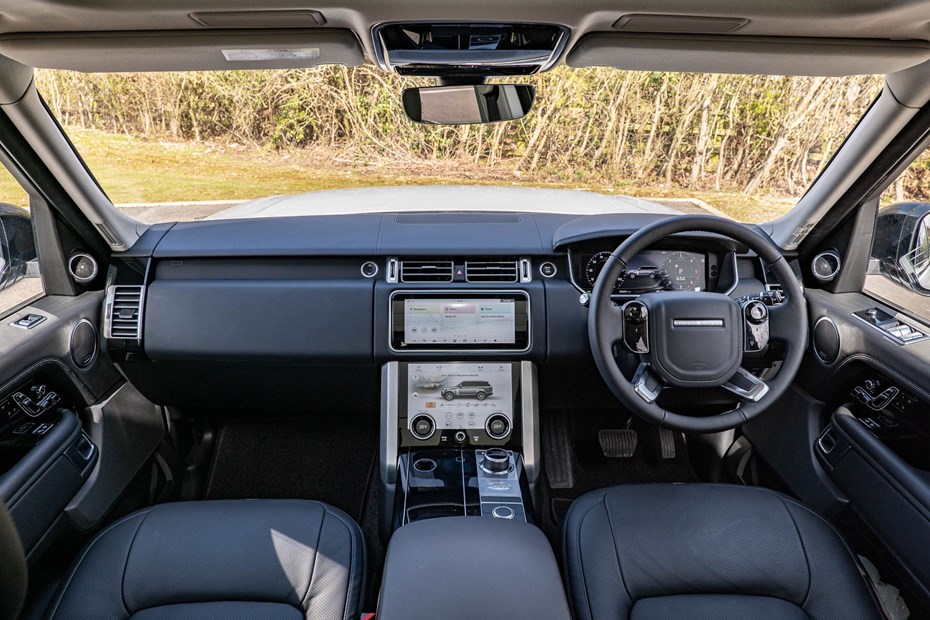
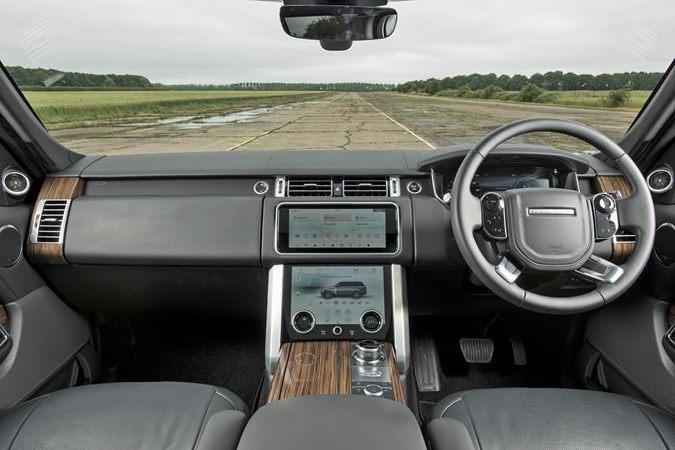
- Reduced switch count means lack of clutter
- Screens lag behind rivals’ offerings
- High quality materials used throughout
How is the quality and layout?
For the Range Rover’s plush interior, think Starship Enterprise meets Harrods, particularly for models built after 2018, which had the number of dashbord buttons and switches reduced by around 50%.
There’s a rotary controller and 10-inch wide-format touchscreen at the heart of the most commonly used functions, plus a 12.3-inch virtual instrument panel, which replaced the previous analogue dials, and brings features like sat-nav and media information.
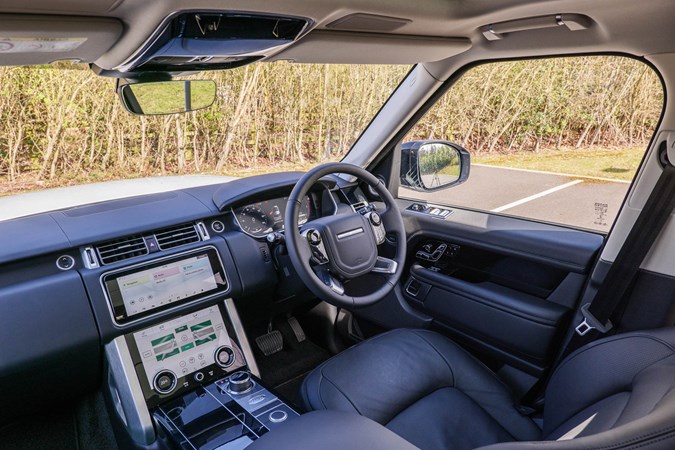
The steering wheel – which incidentally feels very thin for such a large car – hosts two pods of controls with one controlling the cruise control and the other accessing the car’s various functions such as audio and telephone. This is much more tidier to look at compared with earlier cars and their multitude of buttons.
Regardless of trim or wheelbase the Range Rover comes packed with luxury natural materials, such as soft leathers (semi-aniline in high-grade cars) and warm wood veneers. While the presence of leather and wood add to the feeling of premium quality, the interior layout is also designed to provide enhanced levels of comfort.
In contrast to these are the highly polished metal details, which are cool to the touch and brighten the cabin, and feature on the side of the centre console, the gear shifter and air vents.
You can choose to light the cabin with interior LED lighting in ten colours, plus there’s a panoramic roof – fixed as standard; sliding for a fee.
Commanding driving position
That archetypal upright seating position – called Command Driving Position in Range Rover-speak – means you get a good view around the car and its surroundings.
This is obviously beneficial for off-roading but it also offers you a good view on asphalt too, making the Range Rover’s cabin feel luxurious and safe, high up above the rest of the traffic.
Aiding your view out is the bonnet, which is clearly visible, and proximity of the driving seat to the door – this makes it easy to lean out of to aid parking manoeuvres.
Infotainment and tech
The TouchPro Duo screen layout was fitted to all Range Rovers from 2018. Comprising of two high-definition 10-inch touchscreens on the centre console, an arrangement first seen on the Range Rover Velar, this led to even more buttons vanishing from the Range Rover cabin.
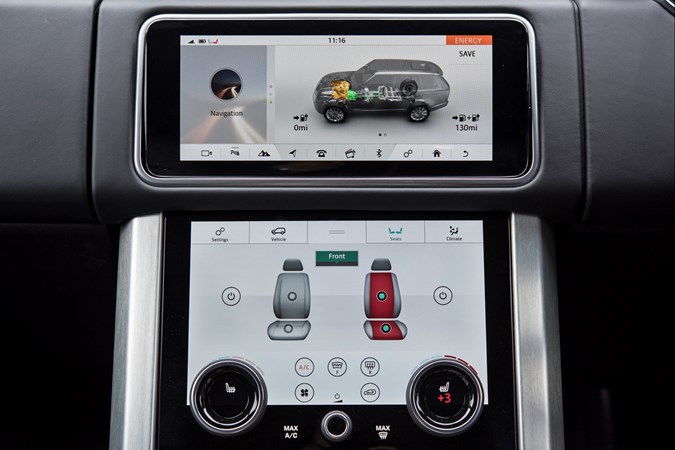
You can have sat-nav information on one while more functional tasks like the climate control can be held on the other. Surprisingly, neither is badly affected by glare or reflections.
The Range Rover does miss out on the latest Pivi Pro infotainment system fitted to newer Land Rover products and this is what dates the cabin the most, with the menus being a little slow to respond and less user-friendly to navigate through.
At least the newer head-up display system uses a 10-inch full-colour projector for information like vehicle speed and directions, which look like they’re hovering beyond the windscreen to reduce the need to refocus your eyes. It’s a definite improvement, but lags behind the impressive set-up you’ll find in a Mercedes GLS, for example.
Also added was a gesture-controlled sunblind, opened and closed by a swipe of your hand.
.jpg)
There are three versions of the Meridian sound system available, with the top two tiers offering surround sound. However, we found even the standard 12 speaker, 380w system fitted to entry-level Vogue models to be clear and punchy enough, especially when sat up front.
SVAutobiography Dynamic and Long-Wheelbase add even more luxury
For maximum opulence or performance you want either the long wheelbase or Dynamic models, each offering an uplift in cabin quality and luxury. Some of the colour schemes on offer might not be those one would ordinarily associate with country-set Range Rovers, but a broadening market does wonders for Land Rover’s cash flow.
This comes in the form of diamond quilted leather, Grand Black door veneers and loads of knurling added to the various switches and shifters.
Is it comfortable?
- Air suspension is better on rough roads
- Huge amounts of interior space on offer
- Supremely comfortable seats in the front or back
Air suspension allows the Range Rover to waft along serenely over both smooth and rutted roads, but inevitably its height and the amount of wheel travel needed for off-road driving means it never feels utterly surefooted in the way a traditional luxury saloon would.
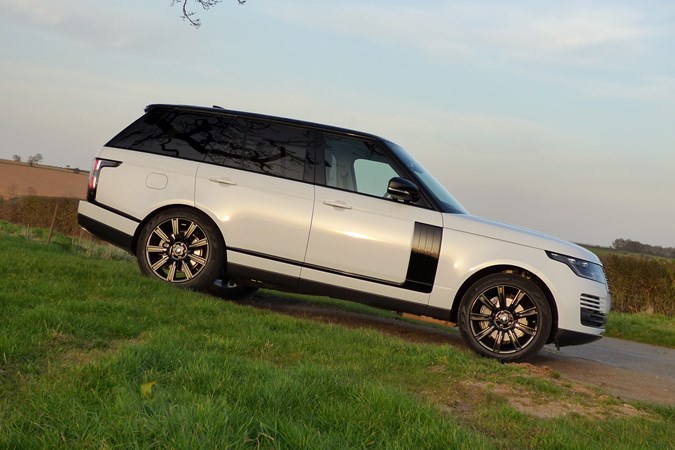
Seat comfort is also a strong point, with an optional massage function offering five programmes for driver and passenger, as well as 12-way electric adjustment and heating, plus the two outer rear seats can be reclined.
The front seat frame was widened in 2018 with deeper foam cushioning, and the controls have been moved to the door panel for ease of use. Top-of-the-range semi-aniline leather front seats feature 24-way adjustment, alongside integrated climate and hot stone massage function. You can select softer, winged headrests, plus extra adjustability in the seat back for those in the front, called Upper Seat Articulation.
It’s a quiet cabin too thanks to 6mm thick glass – 20% more than the previous-generaton Range Rover – to help keep out wind and road noise. Combine with this with a very hushed engine and the Range Rover remains a quiet place to cover long journeys in.
Party in the front, business in the rear
For the ultimate indulgence you’ll want the Rear Executive Class seats option, which can be added to Vogue SE models and is standard on Autobiography models and above.
These two individually powered seats feature wider seat frames, deeper foam and a new design aimed at mimicking a wraparound lounge-like interior.
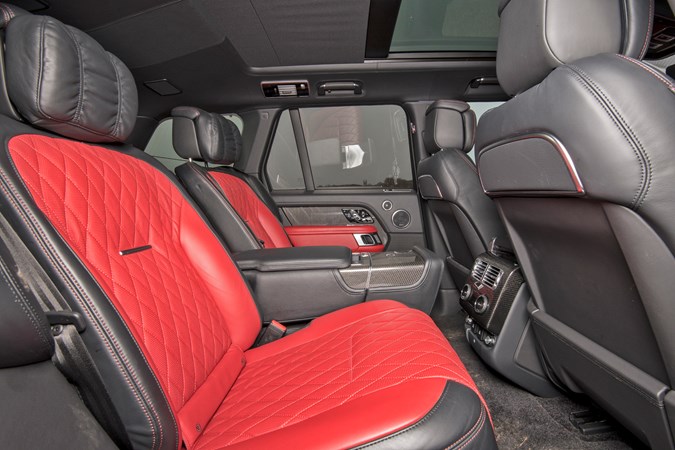
There’s also a memory setting, powered headrests, rear centre console armrest, cushion adjustments, massage function and 40-degree recline angle. All seat functions can be controlled via a smartphone app, whether inside or outside the vehicle.
The middle position houses a special console featuring all the controls and an optional cooler compartment, which can now be moved at the touch of a button to make space in the centre footwell, and enabling passengers to exit from either side of the vehicle. When in use this provides a home for drinks and personal items.
A ‘Passenger Seat Away’ function does what its name suggests, dismissing the front left chair (check there’s no one in it first) in order to extend rear occupant space.
Long-Wheelbase car offers extra space
While legroom in the standard car isn’t exactly at a premium, there’s an extra 192mm in the Long-Wheelbase car, plus seat backs that recline even further, which offers the pinnacle of comfort in a Range Rover.
Powered tables and side door blinds are standard, the latter for limousine-style privacy, as is a rear centre console with bottle fridge to keep your vintage Champagne cool.


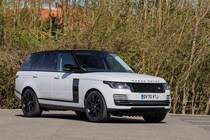
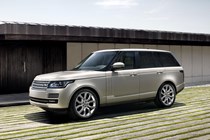

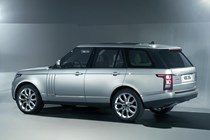
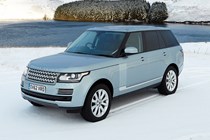
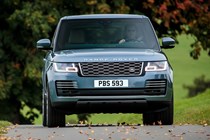
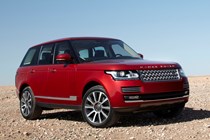
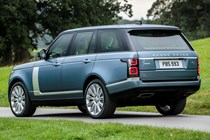
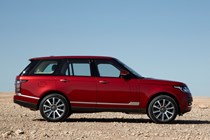
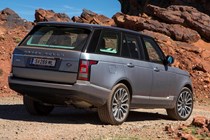
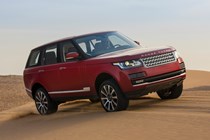
.jpg)
.jpg)
.jpg)
.jpg)
.jpg)
.jpg)
.jpg)
.jpg)
.jpg)
.jpg)
.jpg)
.jpg)
.jpg)
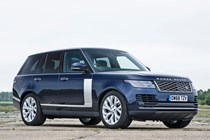
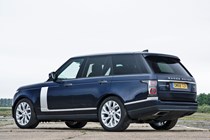
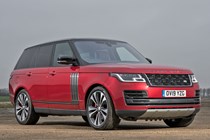
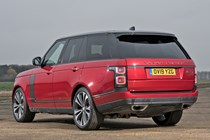
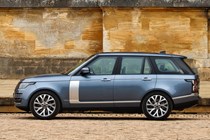
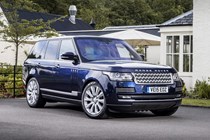

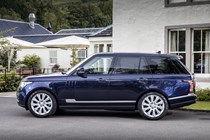
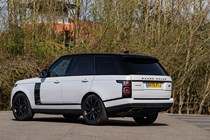



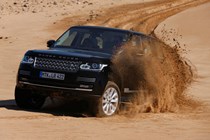

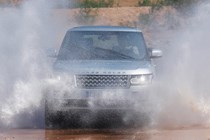
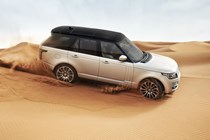
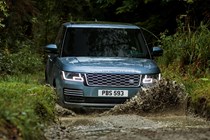
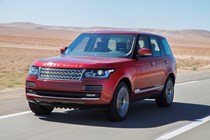
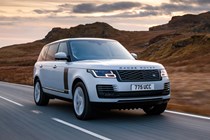
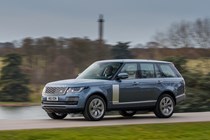
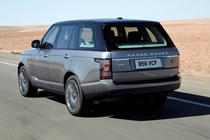
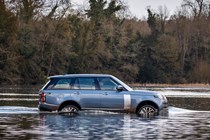
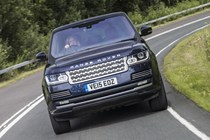

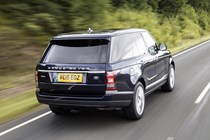
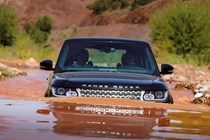
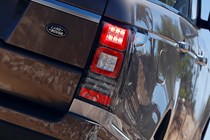
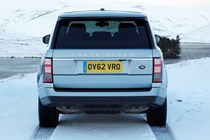
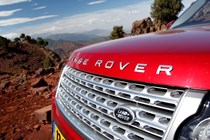
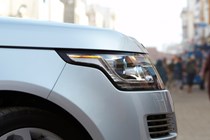
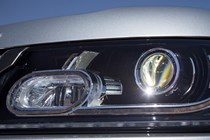

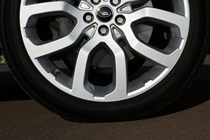
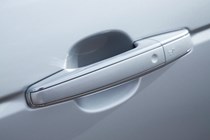
.jpg)
.jpg)
.jpg)
.jpg)
.jpg)
.jpg)
.jpg)
.jpg)
.jpg)
.jpg)
.jpg)
.jpg)
.jpg)
.jpg)
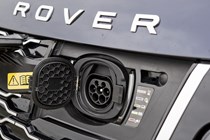
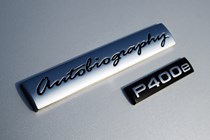
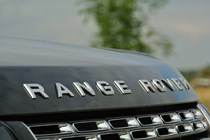
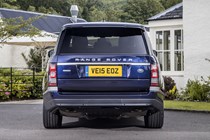
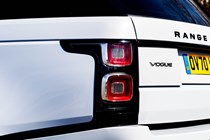
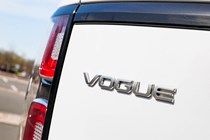


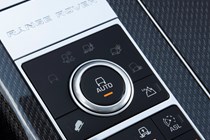
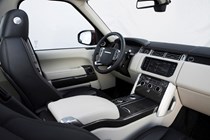
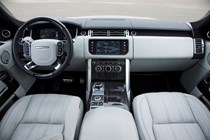
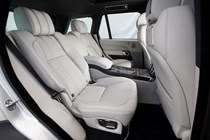
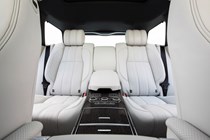
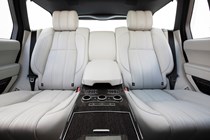
.jpg)
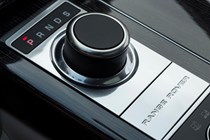
.jpg)
.jpg)
.jpg)
.jpg)
.jpg)
.jpg)
.jpg)
.jpg)
.jpg)
.jpg)
.jpg)
.jpg)
.jpg)
.jpg)
.jpg)
.jpg)
.jpg)
.jpg)
.jpg)
.jpg)
.jpg)
.jpg)
.jpg)
.jpg)
.jpg)
.jpg)
.jpg)
.jpg)

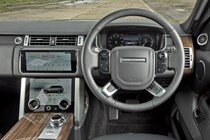
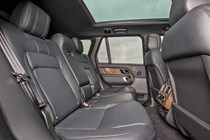



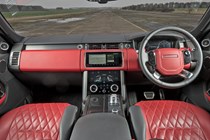

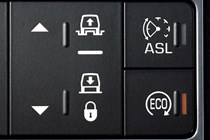
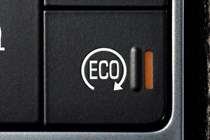
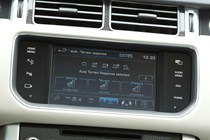

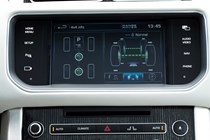
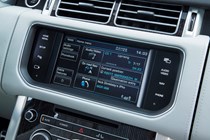
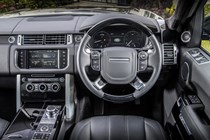
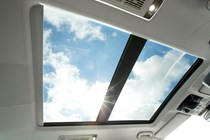

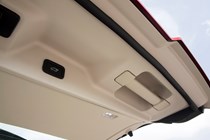
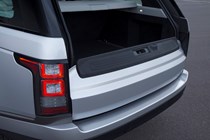
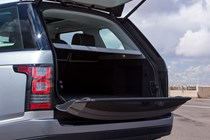
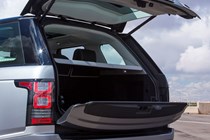
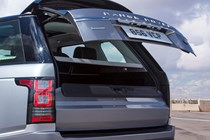
.jpg)
.jpg)
.jpg)
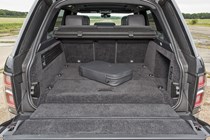

.jpg)
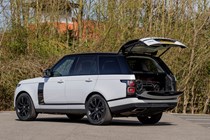
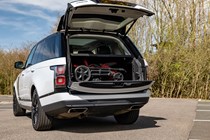
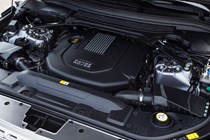
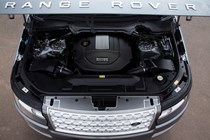
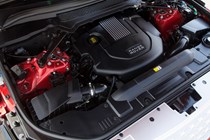
.jpg)
.jpg)
.jpg)
.jpg)
.jpg)
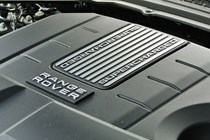











.jpg?quality=50)
.jpg?quality=50)
.jpg?quality=50)
.jpg?quality=50)
.jpg?quality=50)
.jpg?quality=50)
.jpg?quality=50)
.jpg?quality=50)
.jpg?quality=50)
.jpg?quality=50)
.jpg?quality=50)
.jpg?quality=50)
.jpg?quality=50)


































.jpg?quality=50)
.jpg?quality=50)
.jpg?quality=50)
.jpg?quality=50)
.jpg?quality=50)
.jpg?quality=50)
.jpg?quality=50)
.jpg?quality=50)
.jpg?quality=50)
.jpg?quality=50)
.jpg?quality=50)
.jpg?quality=50)
.jpg?quality=50)
.jpg?quality=50)














.jpg?quality=50)

.jpg?quality=50)
.jpg?quality=50)
.jpg?quality=50)
.jpg?quality=50)
.jpg?quality=50)
.jpg?quality=50)
.jpg?quality=50)
.jpg?quality=50)
.jpg?quality=50)
.jpg?quality=50)
.jpg?quality=50)
.jpg?quality=50)
.jpg?quality=50)
.jpg?quality=50)
.jpg?quality=50)
.jpg?quality=50)
.jpg?quality=50)
.jpg?quality=50)
.jpg?quality=50)
.jpg?quality=50)
.jpg?quality=50)
.jpg?quality=50)
.jpg?quality=50)
.jpg?quality=50)
.jpg?quality=50)
.jpg?quality=50)
.jpg?quality=50)
.jpg?quality=50)






















.jpg?quality=50)
.jpg?quality=50)
.jpg?quality=50)


.jpg?quality=50)





.jpg?quality=50)
.jpg?quality=50)
.jpg?quality=50)
.jpg?quality=50)
.jpg?quality=50)
